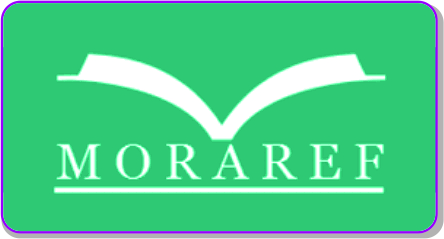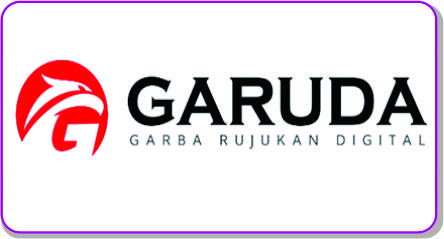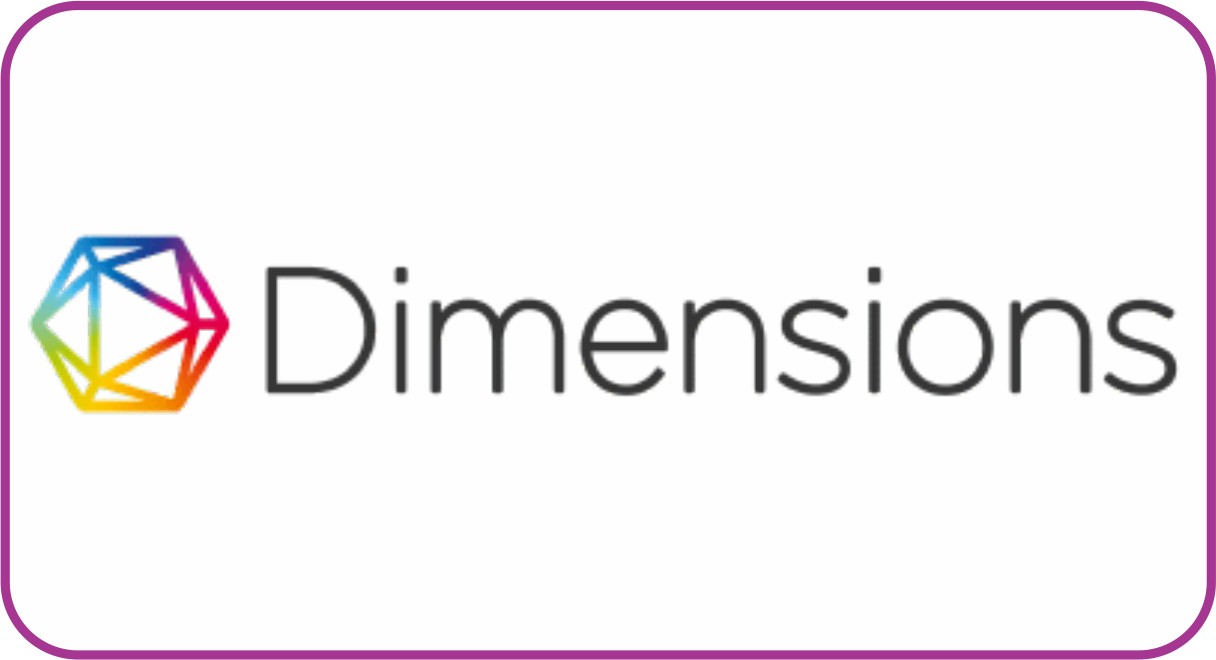- Focus and Scope
- Section Policies
- Peer Review Process
- Publication Frequency
- Open Access Policy
- Publication Ethics and Malpractice Statement
- References Management
- Plagiarism Policy
- Author Fees
- Licensing terms
Focus and Scope
FOCUS :
Lattice Journal : Journal of Mathematics Education and Applied focused is to publish original research (qualitative research, classroom action research, development/design research are top priorities) and/or library analysis on how students learn mathematics and how mathematics is taught in primary, secondary or undergraduate level. The journal also welcomes articles that address common issues in mathematics.
SCOPE :
To maintain the focus, the scope of the published articles will be as follows:
- Mathematical thinking
- Design/Development research in mathematics education
- Integration of mathematics
- The development of students mathematics literacy
- Pure Math (Algebra, Analysis, Combinatorics and Statistics
Section Policies
Articles
Peer Review Process
Some policies in reviewing process of Lattice Journal : Journal of Mathematics Education and Applied
- All manuscripts submitted to this journal must follow Focus and Scope and Author Guidelines of this journal. The submitted manuscripts must fulfil scientific merit or novelty appropriate to the focus and scope of this journal.
- All manuscrips submitted to this journal must be written in good English. Authors for whom English is not their native language are encouraged to have their paper checked before submission for grammar and clarity. The work must not have been published or submitted for publication elsewhere.
- The submitted manuscripts to this journal will be peer-reviewed at least 2 (two) expert reviewers from Reviewers. The reviewers give scientific valuable comments improving the contents of the manuscript. Sometimes (if required) a third peer-reviewer is needed to give critical comments to the submitted manuscript. The review process used in this journal is blind review system.
- All submitted manuscripts must be free from plagiarism contents. All authors are suggested to use plagiarism detection softaware to do the similarity checking (please use Turnitin to check the similarity). Editors will also check the similarity of manuscripts in this journal by using a Turnitin software
- Final decision of manuscript acceptance is solely made by Editor in Chief (together with Associate Editors and Editorial Board if required for consideration) according to reviewers critical comments. The final decision of manuscript is solely based on the Associate Editor and Editorial Board final review which considering peer-reviewers comments (but not solely by Reviewer).
- Publication of accepted articles including the assigning the article to published issue will be made by Editor in Chief by considering sequence of accepted date and geographical distribution of authors as well as thematic issue.
Publication Frequency
Lattice Journal : Journal of Mathematics Education and Applied is a Journal published online twice a year in June and December.
Open Access Policy

This journal provides immediate open access to its content on the principle that making research freely available to the public which supports a greater global exchange of knowledge. All the published Open Access articles will be immediately and permanently free for everyone to read and download. We are continuously working with our author communities to select the best choice of license options, currently being defined for this journal as follows: Creative Commons Attribution-Share Alike 4.0 International (CC BY-SA 4.0)
Publication Ethics and Malpractice Statement
Lattice Journal : Journal of Mathematics Education and Applied is a peer-reviewed open-access journal. This statement clarifies the ethical behavior of all parties involved in the act of publishing an article in this journal, including the author, the chief editor, the Editorial Board, the peer-reviewer and the publisher (Universitas Islam Negeri Sjech M. Djamil Djambek Bukittinggi, Indonesia). This statement is based on the previous COPE's Core Practices.
Ethical Guideline for Journal Publication
The publication of an article in a peer-reviewed Lattice Journal : Journal of Mathematics Education and Applied is an essential building block in the development of a coherent and respected network of knowledge. It is a direct reflection of the quality of the work of the authors and the institutions that support them. Peer-reviewed articles support and embody the scientific method. It is, therefore, important to agree upon standards of expected ethical behavior for all parties involved in the act of publishing: the author, the journal editor, the peer reviewer, the publisher and the society.
Publisher and Editor
Universitas Islam Negeri Sjech M. Djamil Djambek Bukittinggi, Indonesia as publisher ofLattice Journal : Journal of Mathematics Education and Applied takes its duties of guardianship over all stages of publishing extremely seriously and we recognize our ethical and other responsibilities. We are committed to ensuring that advertising, reprint or other commercial revenue has no impact or influence on editorial decisions. In addition, the Universitas Islam Negeri Syarif Hidayatullah Jakarta, Universitas Islam Negeri Malang and Editorial Board will assist in communications with other journals and/or publishers where this is useful and necessary.
Publication Decisions: The editor of HLattice Journal : Journal of Mathematics Education and Applied is responsible for deciding which of the articles submitted to the journal should be published. The validation of the work in question and its importance to researchers and readers must always drive such decisions. The editors may be guided by the policies of the journal's editorial board and constrained by such legal requirements as shall then be in force regarding libel, copyright infringement and plagiarism. The editors may confer with other editors or reviewers in making this decision.
Fair Play: An editor at any time evaluate manuscripts for their intellectual content without regard to race, gender, sexual orientation, religious belief, ethnic origin, citizenship, or political philosophy of the authors.
Confidentiality: The editor and any editorial staff must not disclose any information about a submitted manuscript to anyone other than the corresponding author, reviewers, potential reviewers, other editorial advisers, and the publisher, as appropriate.
Disclosure and Conflicts of Interest: Unpublished materials disclosed in a submitted manuscript must not be used in an editor's own research without the express written consent of the author.
Duties of Reviewers
- Contribution to Editorial Decisions:
Peer review assists the editor in making editorial decisions and through the editorial communications with the author may also assist the author in improving the paper. - Promptness:
Any selected referee who feels unqualified to review the research reported in a manuscript or knows that its prompt review will be impossible should notify the editor and excuse himself from the review process - Confidentiality:
Any manuscripts received for review must be treated as confidential documents. They must not be shown to or discussed with others except as authorised by the editor. - Standards of Objectivity:
Reviews should be conducted objectively. Personal criticism of the author is inappropriate. Referees should express their views clearly with supporting arguments. - Acknowledgement of Sources:
Reviewers should identify relevant published work that has not been cited by the authors. Any statement that an observation, derivation, or argument had been previously reported should be accompanied by the relevant citation. A reviewer should also call to the editor's attention any substantial similarity or overlap between the manuscript under consideration and any other published paper of which they have personal knowledge. - Disclosure and Conflict of Interest:
Privileged information or ideas obtained through peer review must be kept confidential and not used for personal advantage. Reviewers should not consider manuscripts in which they have conflicts of interest resulting from competitive, collaborative, or other relationships or connections with any of the authors, companies, or institutions connected to the papers.
Duties of Authors
- Reporting Standards:
Authors of reports of original research should present an accurate account of the work performed as well as an objective discussion of its significance. Underlying data should be represented accurately in the paper. A paper should contain sufficient detail and references to permit others to replicate the work. Fraudulent or knowingly inaccurate statements constitute unethical behaviour and are unacceptable. - Data Access and Retention:
Authors are asked to provide the raw data in connection with a paper for editorial review, and should be prepared to provide public access to such data (consistent with the ALPSP-STM Statement on Data and Databases), if practicable, and should in any event be prepared to retain such data for a reasonable time after publication. - Originality and Plagiarism: The authors should ensure that they have written entirely original works, and if the authors have used the work and/or words of others that this has been appropriately cited or quoted.
- Multiple, Redundant or Concurrent Publication:
An author should not, in general, publish manuscripts describing essentially the same research in more than one journal or primary publication. Submitting the same manuscript to more than one journal concurrently constitutes unethical publishing behaviour and is unacceptable. - Acknowledgement of Sources:
Proper acknowledgement of the work of others must always be given. Authors should cite publications that have been influential in determining the nature of the reported work. - Authorship of the Paper:
Authorship should be limited to those who have made a significant contribution to the conception, design, execution, or interpretation of the reported study. All those who have made significant contributions should be listed as co-authors. Where there are others who have participated in certain substantive aspects of the research project, they should be acknowledged or listed as contributors. The corresponding author should ensure that all appropriate co-authors and no inappropriate co-authors are included on the paper and that all co-authors have seen and approved the final version of the paper and have agreed to its submission for publication. - Disclosure and Conflicts of Interest:
All authors should disclose in their manuscript any financial or another substantive conflict of interest that might be construed to influence the results or interpretation of their manuscript. All sources of financial support for the project should be disclosed. - Fundamental errors in published works:
When an author discovers a significant error or inaccuracy in his/her own published work, it is the author’s obligation to promptly notify the journal editor or publisher and cooperate with the editor to retract or correct the paper.
References Management
In writing Citation and Bibliography, Lattice Journal : Journal of Mathematics Education and Applied uses the Mendeley Reference Management Software.
Plagiarism Policy
Lattice Journal : Journal of Mathematics Education and Applied Editorial board recognizes that plagiarism is not acceptable and therefore establishes the following policy stating specific actions (penalties) when plagiarism is identified in an article that is submitted for publication in Lattice Journal.
Definition:
Plagiarism involves the "use or close imitation of the language and thoughts of another author and the representation of them as one's own original work."
Policy:
Papers must be original, unpublished, and not pending publication elsewhere. Any material taken verbatim from another source needs to be clearly identified as different from the present original text by (1) indentation, (2) use of quotation marks, and (3) identification of the source.
Any text of an amount exceeding fair use standards (herein defined as more than two or three sentences or the equivalent thereof) or any graphic material reproduced from another source requires permission from the copyright holder and, if feasible, the original author(s) and also requires identification of the source; e.g., previous publication.
When plagiarism is identified, the Editor in Chief responsible for the review of this paper and will agree on measures according to the extent of plagiarism detected in the paper in agreement with the following guidelines:
Level of Plagiaris
1. Minor: A short section of another article is plagiarized without any significant data or idea taken from the other paper
Action : A warning is given to the authors and a request to change the text and properly cite the original article is made
2. Intermediate: A significant portion of a paper is plagiarized without proper citation to the original paper
Action: The submitted article is rejected and the authors are forbidden to submit further articles for one year
3. Severe : A significant portion of a paper is plagiarized that involves reproducing original results or ideas presented in another publication
Action: The paper is rejected and the authors are forbidden to submit further articles for five years.
It is understood that all authors are responsible for the content of their submitted paper as they all sign the Lattice Journal Copyright Transfer Form. If a penalty is imposed for plagiarism, all authors will be subject to the same penalty.
If a second case of plagiarism by the same author(s) is identified, a decision on the measures to be enforced will be made by the Editorial board (Editor-in-Chief, and Editorial members) with the Chair of the Editor in Chief. The author(s) might be forbidden to submit further articles forever.
This policy applies also to material reproduced from another publication by the same author(s). If an author uses text or figures that have previously been published, the corresponding paragraphs or figures should be identified and the previous publication referenced. It is understood that in case of a review paper or a paper of a tutorial nature much of the material was previously published.
The author should identify the source of the previously published material and obtain permission from the original author and the publisher. If an author submits a manuscript to Lattice Journal with significant overlap with a manuscript submitted to another journal simultaneously, and this overlap is discovered during the review process or after the publications of both papers, the editor of the other journal is notified and the case is treated as a severe plagiarism case. Significant overlap means use of identical or almost identical figures and identical or slightly modified text for one half or more of the paper. For self plagiarism of less than one half of the paper but more than one tenth of the paper, the case shall be treated as intermediate plagiarism. If self plagiarism is confined to the methods section, the case shall be considered as minor plagiarism.
If an author uses some of his previously published material to clarify the presentation of new results, the previously published material shall be identified and the difference to the present publication shall be mentioned. Permission to republish must be obtained from the copyright holder. In the case of a manuscript that was originally published in conference proceedings and then is submitted for publication in Lattice Journal : Journal of Mathematics Education and Applied either in identical or in expanded form, the authors must identify the name of the conference proceedings and the date of the publication and obtain permission to republish from the copyright holder. The editor may decide not to accept this paper for publication.
However, an author shall be permitted to use material from an unpublished presentation, including visual displays, in a subsequent journal publication. In the case of a publication being submitted that was originally published in another language, the title, date and journal of the original publication must be identified by the authors, and the copyright must be obtained. The editor may accept such a translated publication to bring it to the attention of a wider audience. The editor may select a specific paper that had been published (e.g. a “historic” paper) for republication in order to provide a better perspective of a series of papers published in one issue of Lattice Journal. This republication shall be clearly identified as such and the date and journal of the original publication shall be given, and the permission of the author(s) and the publisher shall be obtained.
The Lattice Journal : Journal of Mathematics Education and Applied layout editor for the Journal is responsible for maintaining the list of authors subjected to penalties and will check that no authors of a submitted paper are on this list. If a banned author is identified, the layout editor will inform the Editor-in-Chief who will take appropriate measures. This policy will be posted on the web site with the instructions for submitting a manuscript, and a copy will be sent to the authors with the confirmation email upon initial receipt of their original manuscript. A sentence shall be added to the copyright transfer form to indicate that the author(s) have read the Plagiarism Policy.
Author Fees
Licensing terms
Authors who publish with Lattice Journal : Journal of Mathematics Education and Applied agree to the following terms: Authors retain copyright and grant the Lattice Journal : Journal of Mathematics Education and Applied right of first publication with the work simultaneously licensed under a Creative Commons Attribution License (CC BY-SA 4.0) that allows others to share (copy and redistribute the material in any medium or format) and adapt (remix, transform, and build upon the material) the work for any purpose, even commercially with an acknowledgement of the work's authorship and initial publication in Lattice Journal : Journal of Mathematics Education and Applied. Authors are able to enter into separate, additional contractual arrangements for the non-exclusive distribution of the journal's published version of the work (e.g., post it to an institutional repository or publish it in a book), with an acknowledgement of its initial publication in Lattice Journal : Journal of Mathematics Education and Applied. Authors are permitted and encouraged to post their work online (e.g., in institutional repositories or on their website) prior to and during the submission process, as it can lead to productive exchanges, as well as earlier and greater citation of published work (See The Effect of Open Access).







